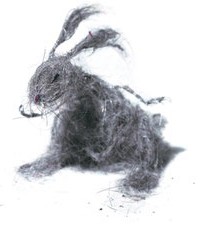Is Duct Cleaning a Waste of Money?
The Environmental Protection Agency (EPA) and the American Council of Governmental and Industrial Hygienists (ACGIH) have studied duct cleaning extensively. Feel free to visit the EPA duct cleaning page. According to EPA or ACGIH, duct cleaning has never been shown to improve indoor air quality or actually prevent health problems. Neither do studies conclusively demonstrate that dust levels in homes increase because of dirty air ducts. This is because much of the dirt in air ducts adheres to duct surfaces and does not necessarily enter the living space. Indeed, the opposite can be true! A coating or mat of dust in a return air duct can actually be a settling surface that can act as a filter media for removal of particles, reducing the dust load that may need to be filtered out by your furnace’s filter. The National Duct Cleaners Association webpage is also careful not to make any unsupported claims about purported health benefits.
Dust Levels in Indoor Air
The dust levels in indoor air will generally depend on housekeeping activities and household sources (e.g. smoking/laundering) much more than the conditions in the duct work. There is no evidence that normal amounts of general household dust suspended in the air impacts your health. In fact, there is some evidence to suggest that raising very young children in an unusually clean and somewhat artificially sterile environment could increase the risk of allergies and asthma! Nevertheless, that doesn’t mean there aren’t a few circumstances that would dictate a need for duct cleaning. First of all, its important to understand that all ductwork is not the same.
Understanding Ducts
Understanding your ductwork and the home’s history is key to understanding whether there could possibly be any benefit to duct cleaning. One of the most important considerations for duct cleaning is whether you are dealing with ductwork supply or return runs. It is important to differentiate these two systems that are often much different in terms of air velocity and material of construction. Typically, there is a much higher velocity in the supply air ducts and therefore there is much less dust settling. In addition, a large fraction of this air supply is pre-filtered air from the return plenum. The return air ducts typically have lower air velocities and therefore have greater dust accumulations.
The supply and return ducts are not directly connected. Some duct cleaners will cut a hole in the main supply ducts and suck them out from there. This does not address the dust load in the return ducts, which again are typically much dirtier. In my experience, supply ducts get most of the attention whereas often it is the returns that are in need of the most cleaning effort. Dust accumulation and other problems are typically more advanced in return ducts, where air velocity is slower and return air typically contains higher loads of dust. Supply air is typically much cleaner as it is usually downstream of the filtration media serving the ventilation system.
Much is also made of the more intrusive and expensive aggressive duct cleaning methods such as brushing/vibration methods, crawler-scrubbers and similar tools compared to cleaning solely by vacuum extraction methods. These advanced duct cleaning methods are generally unnecessary. Such particulate that cannot be removed by vacuum extraction or other non-intrusive disturbances and less aggressive means are unlikely to be resuspended by air movement.
Take a look at your ducts. Do they appear to be original to the house construction? Sometimes they are replaced or added on when the furnace is upgraded or replaced. If they are less than 20-30 years old, they are unlikely to have accumulated significant levels of dust and debris to worry about. Another important consideration (and indication of age) is the presence of asbestos duct insulation.
Energy Savings
It is sometimes suggested that duct cleaning improves energy efficiency. While in theory this is true, generally speaking the ducts were designed in older homes to be larger for the less efficient furnaces installed at that time. Newer furnaces are more efficient and typically require less return air flow. Therefore, the small savings in efficiency by improved air flow will take a long period of time to offset the cost of duct cleaning. Money can be better spent energy-proofing your house elsewhere! Again, the NADCA website is careful in not making any specific claims because there are no studies that can be conclusively cited that prove a significant energy savings.
Sanitizing? … Nooooooo!!!!
Even worse than the myth that ducts are typically clogged with harmful amounts of dust is that mold “grows” in ductwork or that they are festering with other nasties such as bacteria or dust mites. In general, mold abhors air velocity and prefers to remain undisturbed in stagnant air conditions. Rather, a building with mold problems could result in an accumulation of mold spores and related particulate in the ductwork and spores and odors from mold may be redistributed through a building via the ductwork.
Similarly, contrary to popular belief, dust mites or bacteria also do not thrive in great numbers within ductwork. Mites need moisture and prefer the habitat of bedding, carpet and pillows with a fresh supply of skin cells for food rather than in the ducts. Obviously, dust mite allergen does accumulate in the dust levels in ducts. The half-life of dust mite allergen is estimated to be up to about 10 years. However, the microfauna and bacteria that feed on dust mite allergen that advances degradation are not well studied. Bacteria require moisture. In the absence of a moisture source, bacterial growth in ductwork is not a problem. The competition for moisture limits the growth of any microbes or microfauna in ductwok. The limited amounts of bacterial growth in ductwork is natural and there is no reason to think that bacteria adapted to live on household dust are harmful.
EPA has approved the use of chemical sanitizers. However, legally a duct cleaner must have pesticide training and certification to use them. Very few duct cleaners are legally qualified and certified for sanitizer application! If there is a concern for gross microbial contamination of ductwork, the ducts should probably just be replaced. Sanitizing is not necessarily a permanent fix for a serious contamination problem and you don’t want to be breathing sanitizer into your lungs. There is no reason to sanitize normal ducts. The overuse of sanitizers is a big problem! In my opinion, sanitizers are a merely a gimmicky upcharge opportunity for duct cleaners.
Conclusions
The results of some duct cleaning studies are counterintuitive, noting that dust accumulation in the ductwork can act as an attracting settling surface and filtration point, amounting to an additional passive filtration system, which in theory could result in a slight improvement in air quality! Therefore, in most situations, there is no reason to perform duct cleaning as a regular maintenance activity. Keep in mind the risk posed if asbestos is hidden on the outside or inside of your ducts.
If mechanical system changes are going to be made that would, for example, increase the air velocity and affect the dust deposition patterns in the ductwork, then it may be appropriate to perform duct cleaning before dust is resuspended and possibly released to the living space. However, typically high efficiency heating and cooling upgrades involve slower air velocities and therefore installing a new system may not cause any release of ductwork dust into the home. In my own experience, the installation of a new furnace in a home that had dirty ducts (constructed in 1947) only resulted in the slightest puff of a burning dust odor, consistent with what is typically experienced the first time a furnace comes on at the beginning of the heating season.
Duct Cleaning…Yes!
Duct cleaning has its value in certain situations, A good case can be made for duct cleaning in the following circumstances (but you could probably figure this out without my help using common sense!):
• A catastrophic flood occurred in the upper portion of the house (e.g. a plumbing break), which caused debris to be washed into the ducts.
A catastrophic flood occurred in the upper portion of the house (e.g. a plumbing break), which caused debris to be washed into the ducts.
• The home had some sort of infestation (e.g. mice or raccoon) where the ductwork has been contaminated by feces, animal fur, nesting material etc.
The home had some sort of infestation (e.g. mice or raccoon) where the ductwork has been contaminated by feces, animal fur, nesting material etc.
• The home was occupied by young children that did…well something crazy as young children sometimes do, such as using an unsecured vent as a wastebasket.
The home was occupied by young children that did…well something crazy as young children sometimes do, such as using an unsecured vent as a wastebasket.
• The home was occupied by an individual who used the ductwork to hide contraband (drugs/paraphernalia etc.).
The home was occupied by an individual who used the ductwork to hide contraband (drugs/paraphernalia etc.).
• You like your house clean. It gives you piece of mind. Some people keep their house clean and are bothered by the thought of dust hidden underneath their stove or behind their refrigerator and like to clean every nook and crevice of their home. Good for you! If you are happier and sleep better knowing your ducts are clean, then by all means, get your ducts cleaned as well! But the money could probably be spent better elsewhere towards making your home healthier.
You like your house clean. It gives you piece of mind. Some people keep their house clean and are bothered by the thought of dust hidden underneath their stove or behind their refrigerator and like to clean every nook and crevice of their home. Good for you! If you are happier and sleep better knowing your ducts are clean, then by all means, get your ducts cleaned as well! But the money could probably be spent better elsewhere towards making your home healthier.
"... you shall return to the ground, for out of it you were taken; you are dust, and to dust you shall return."
--Genesis 3:19
credit: NRDC


